► Electric Lexus UX 300e review
► 196-mile e-range, 7.5sec 0-62mph
► Is this the small EV to tempt you?
Who’d have thought it would take this long for Lexus to make a full electric car? Well, here’s its compact UX crossover – the car Lexus thinks is the perfect place to start its battery electric vehicle (BEV) roll-out.
Lexus’s European strategy over the next few years is to kill off the ancient CT, low-selling IS and RC coupe, and slowly introduce more plug-in hybrid (PHEV) and battery-electric models.
The Lexus UX 300e is very much a flavour of what’s to come – and we’ve now spent quality time on UK roads, with a variety of drivers behind the wheel. Read on for our electric UX review.
Lexus UX 300e: specs and details of the electric Lexus
There’s just one power variant for now, the 300e. A single 201bhp e-motor powers the front wheels, good for a 7.5sec 0-62mph sprint and a claimed 196-mile range from its 54.4kWh battery pack. Lexus says a fast charge will take under an hour via a CHAdeMO plug (there are two ‘fuel’ flaps: a Type 2 charger on the driver’s side, a fast-charge CHAdeMO plug on the near side).
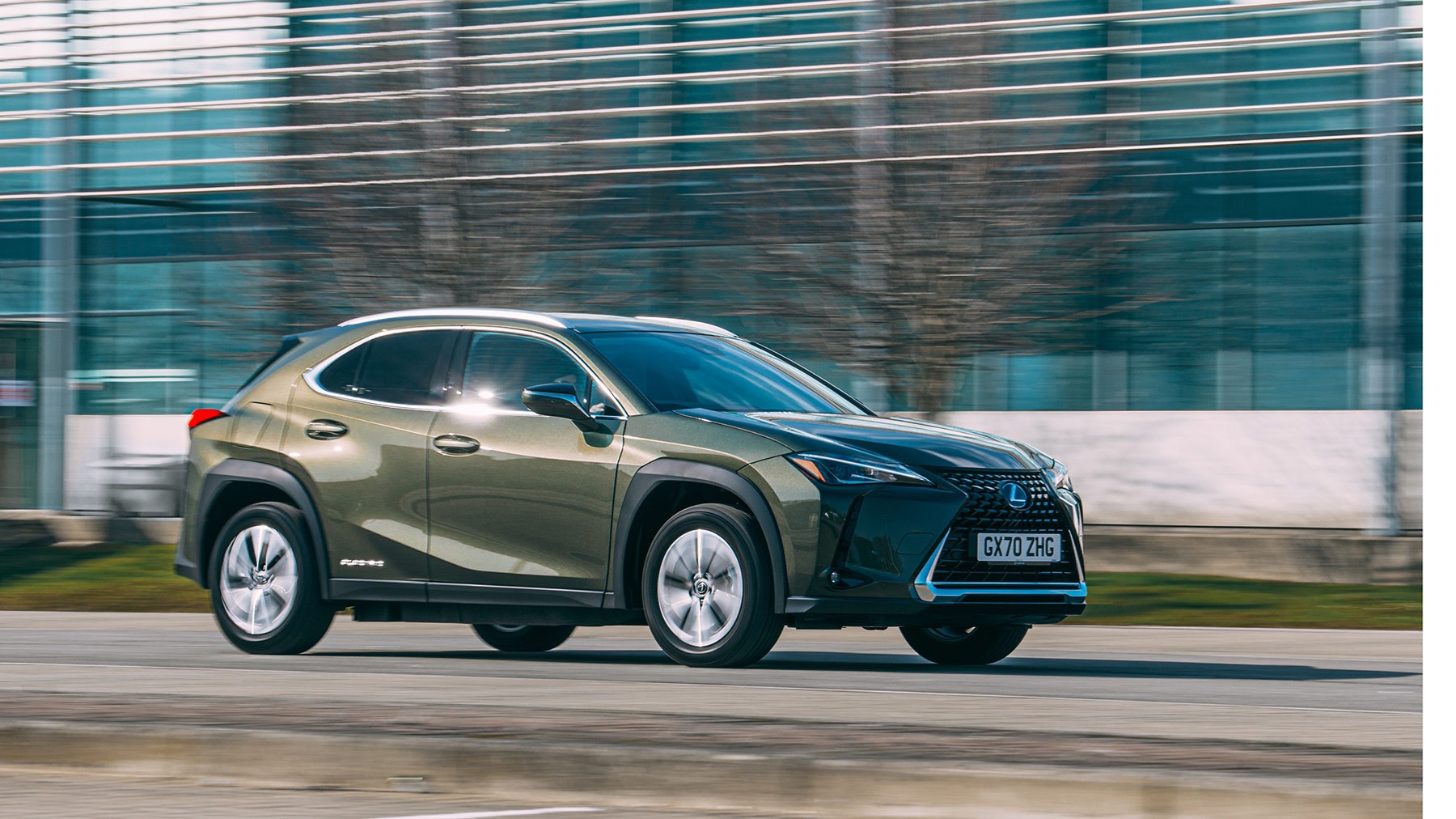
Instead of trim levels like most other Lexus models, the electric UX instead uses option packs. All UX 300e models have LED headlights, all-round parking sensors and a (slightly low-res) reversing camera, a big safety tech suite, Apple CarPlay and Android Auto; the Premium Plus Pack adds leather, keyless entry, a wireless phone charger and more, while the Takumi pack throws in 18-inch wheels, a sunroof, head-up display, a larger nav screen and a Mark Levinson audio system among other bits and pieces.
An electric UX’s list price starts at about £10k more than a hybrid one (after the government’s recently diminished £3000 EV grant) and Lexus says the Premium Plus will make up the biggest portion of sales in the UK.
Like the hybrid UX, the rear seats are still a tad cramped for tall adults (weirdly, there is barely anywhere to put your feet under the front seat) but, interestingly, the configuration of the battery packs deployed in the GA-C platform Lexus utilises here makes for a larger boot volume in the EV; 320 litres for the front-driven 250h, 367 litres for the 300e.
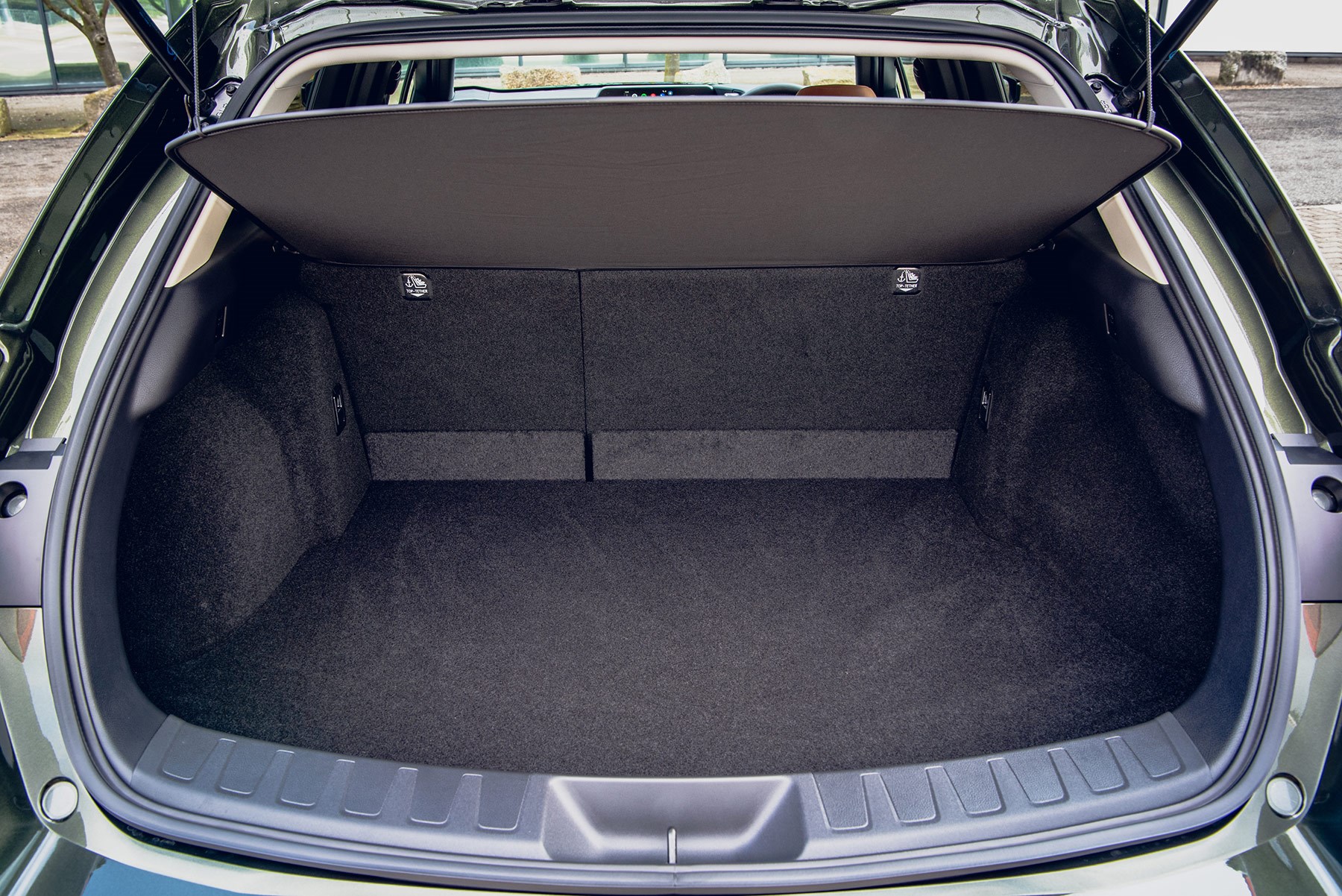
It’s a good-sized loadbay (pictured here) that’ll meet approval from family owners.
Electric car grants: the Plug-in Car Grant explained
Any other differences from the petrol UX models?
Not really. We’d hardly call it beautiful, but the UX is certainly a striking-looking thing and interior quality is impeccable, with special mention to the neoprene-style dashtop material and some exceptionally squidgy armrests. The driving position is impressively adjustable, and you can sit impressively low in something that’s designed as an SUV.
You still have to suffer Lexus’s fiddly touchpad infotainment system, though – which is maddening, as you have to trace patterns with your left hand on a trackpad. This archaic system really should be pensioned off. We would strongly recommend using CarPlay or Android Auto to sync your smartphone (our test car had no sat-nav built in anyway).
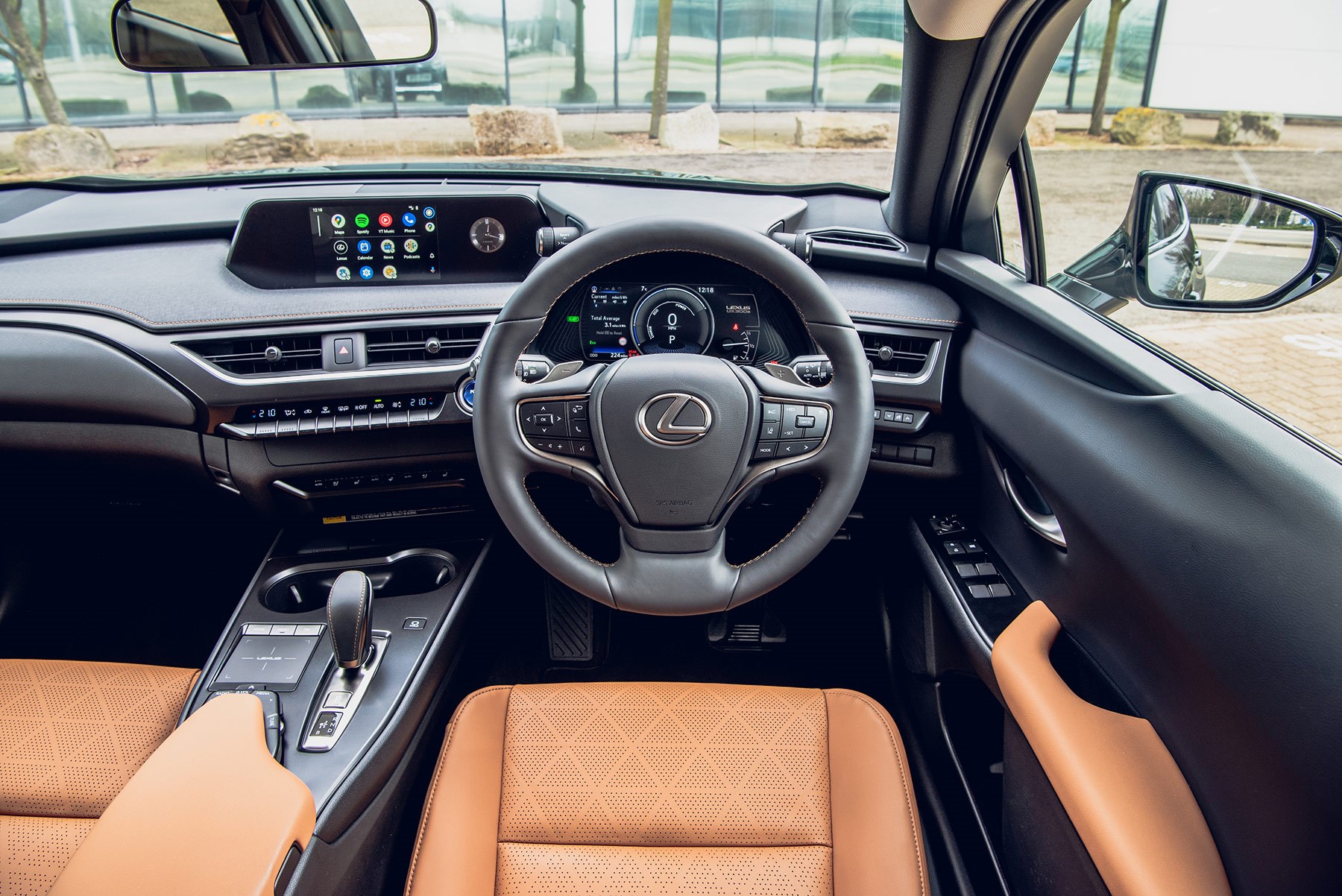
So, how does the electric UX drive?
With absolutely zero drama, as you’d expect from a plush ’n’ premium electric Lexus. Having a 150kW electric motor (equivalent to 201bhp) is perfectly punchy for a small EV, and it allows the electric UX to zip away from traffic lights in a torque-ful way that may surprise first-timers. Stamp on the throttle and, like a Hyundai Kona Electric, the front wheels quite hilariously scrabble for grip, traction control light flashing frantically, accompanied by a futuristic whooshing e-motor sound.
Chuck it about and, while the chassis itself feels tight, the suspension and anti-roll bars are definitely geared towards comfort; the UX feels floaty when you get a move on, with some gentle pitching and wallowing in twisty bends, and there’s a totally neutered feel to the steering.
Please forgive our brief road-tester indulgences – if it’s your own car, chances are you won’t drive an electric crossover like you stole it. Merely pottering about in the electric UX is pretty much effortless and genuinely relaxing. This electric powertrain really reinforces what Lexus cars are all about: refinement, quality, a slower, gentler pace of life. Here the UX 300e excels.
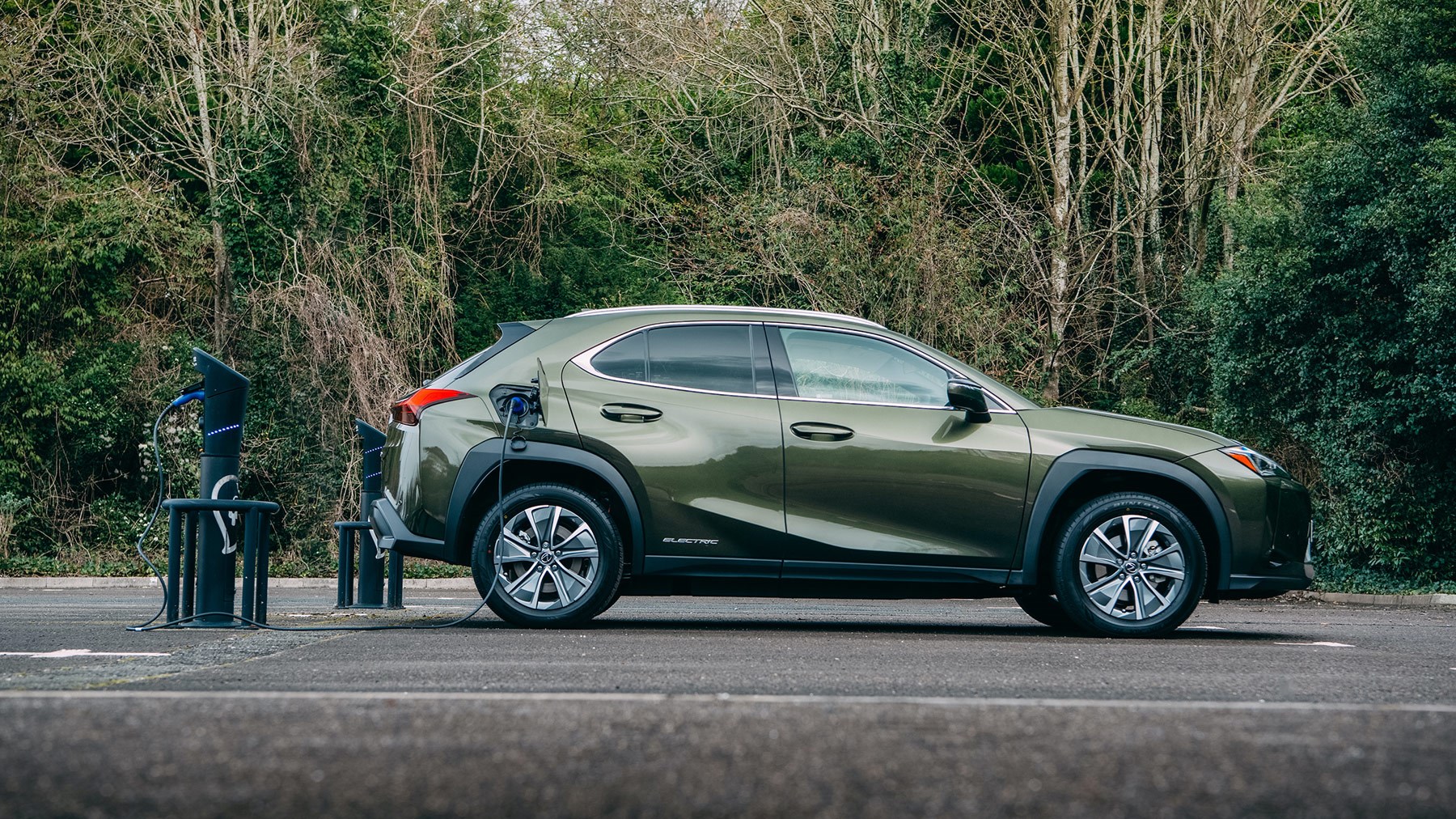
We’ve tested a Takumi-spec model riding on the larger 18s, which make the ride border on lumpy. It’s okay, but stepping down to the more popular Premium Plus pack variant with its smaller 17s takes the edge off road lumps a little more. The most noticeable intrusion is tyre noise on coarser surfaces at higher speeds but, otherwise, the electric UX is remarkably well insulated from wind noise.
Back in the urban environment, you can temporarily adjust the amount of brake regeneration via some wheel-mounted shift paddles or move the gear selector to ‘B’ to keep it in the more pronounced regen mode. Using either of these options isn’t drastic enough to allow for one-pedal driving in urban areas, however; we wish there was a little more regenerative braking on offer – and it can be confusing to tap the gearlever and/or the paddles to effect full ‘engine braking’.
Anything else I should know?
Lexus UK is keen to point out the electric UX’s competitive financing prices, but you’ll have trouble completely ignoring some of the Lexus’s closest rivals. Lexus points more to the Model 3 and the Polestar 2 for potential UX 300e competitors.
However, we would also point buyers in the direction of less premium rivals: top-spec trims of the Hyundai Kona Electric (Premium SE, £38,500) Kia e-Niro (Grade 4+, £36,195) and Peugeot e-2008 (GT, £35,190) all have similar or better range claims and/or larger boot volumes and, at least in the Peugeot’s case, feel more fun to drive despite being less powerful.
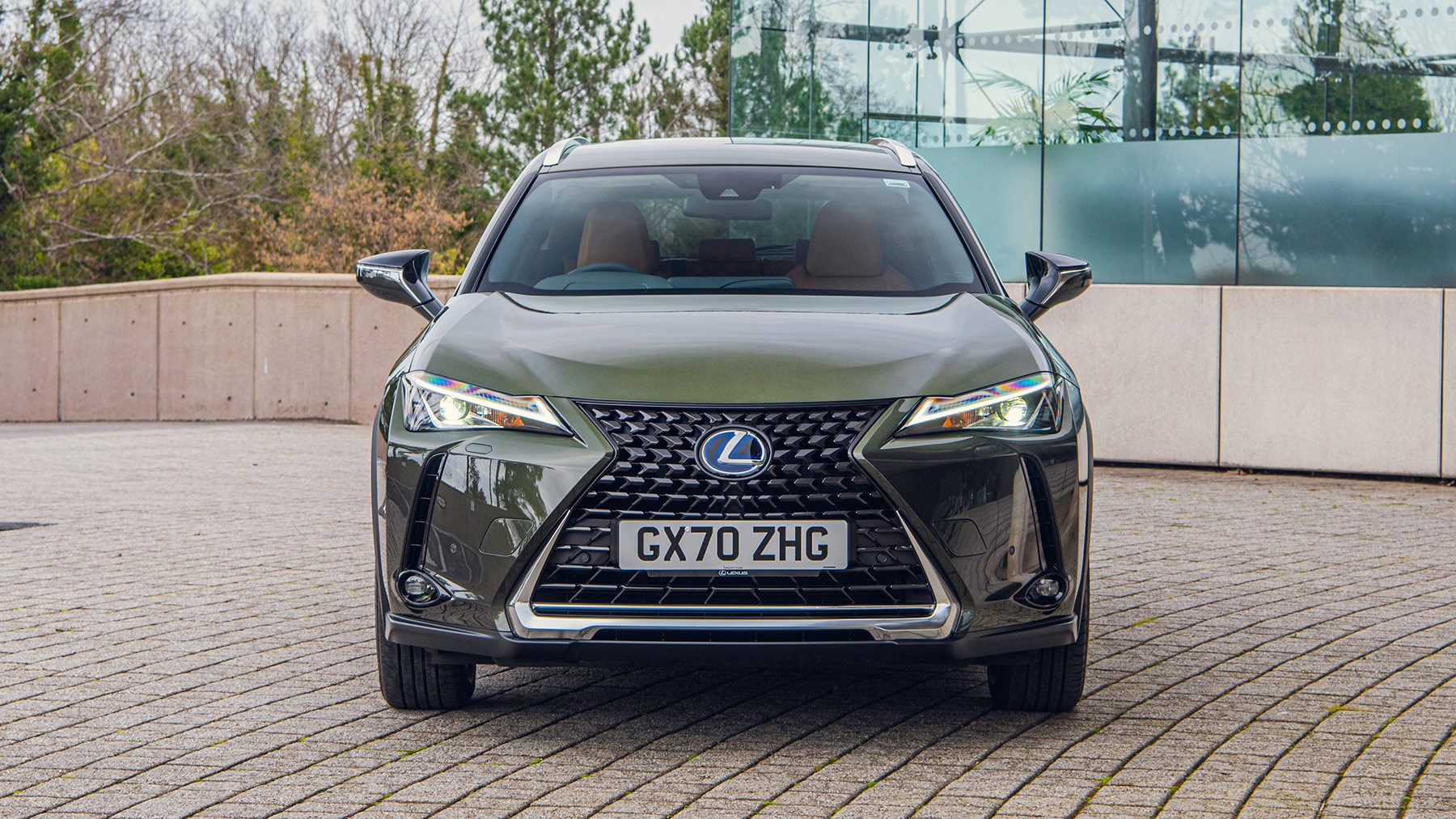
It’s the same with electric cars waiting in the wings: Ford’s Mustang Mach-E – a larger car than the electric UX – has a starting price of £40k pre-grant with more range. Tesla’s Model Y is expected to start at around £45k, too. Plenty to think about if you’re not as bothered by having a Lexus badge on the front of your next car.
We found the claimed electric range to be more credible than some manufacturers’: during our March 2021 test, the UX 300e showed 164 miles on a full charge – not quite matching the full claim, but not too far off. Crucially, those miles seem quite believable too, and the range meter doesn’t collapse so long as you drive sensibly.
Lexus UX 300e: verdict
Lexus’s first all-electric car is a neat effort. We’d argue the UX makes better sense as an EV than a hybrid. It’s powerful and quick, range is plentiful enough and you’re treated to a small and fashionable crossover with a supremely well put-together interior. But there are plenty of cheaper, longer-range and more practical small EVs out there for similar dosh.
Check out our Lexus reviews
The best electric cars on sale today
How much does it cost to charge an electric car?
Our guide to the best electric SUVs